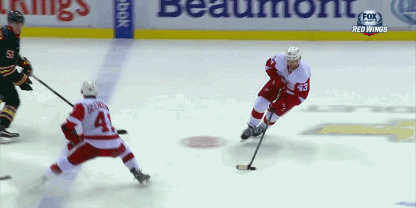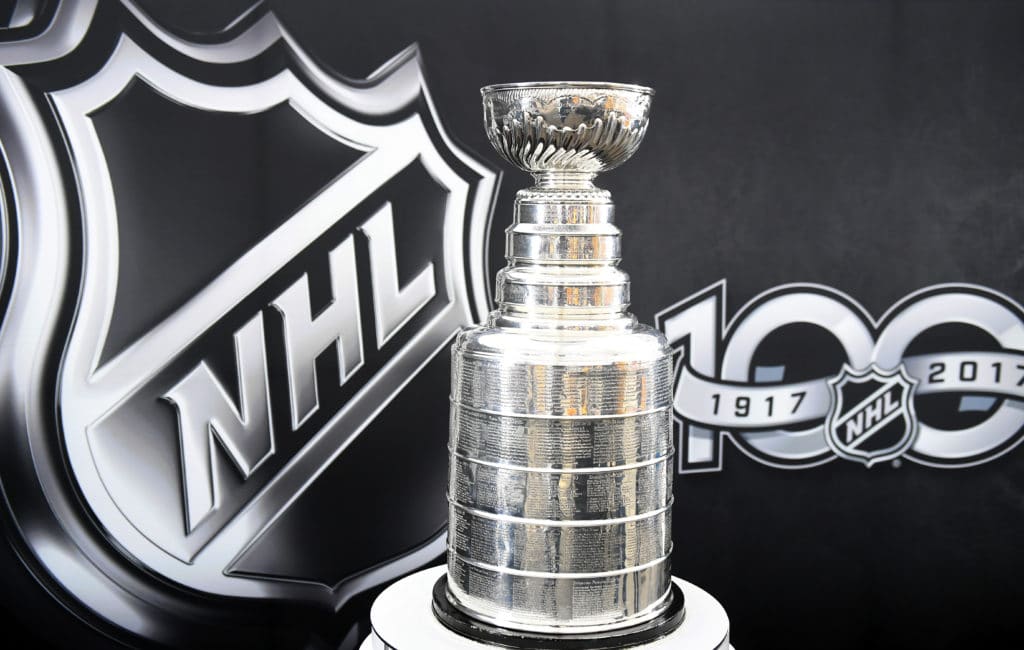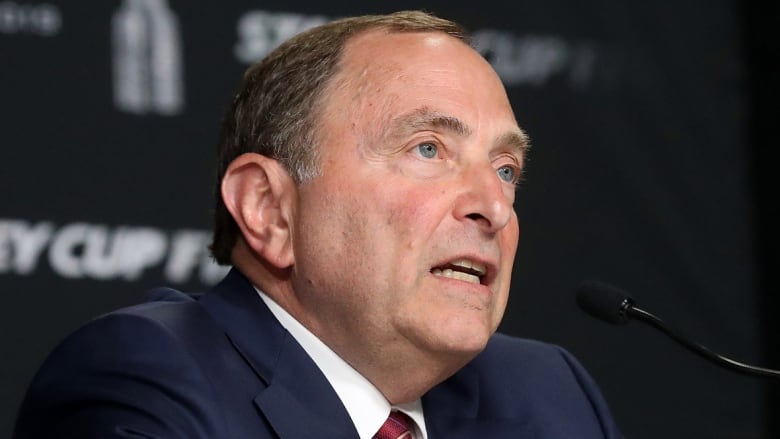The sport keeps growing fans keep coming in, but sometimes the rules can be a little confusing to new fans, so I’m going to do my best to explain them in a way that they can be easily understood.
Icing:

If you are behind the neutral zone red line and you launch the puck behind the attacking zone red line, it will be called as an icing. When an icing is performed, it is most commonly a way to disrupt momentum from the attacking team while they are in your zone. The biggest problem with doing this, however, is that when you take an icing, the team who commits the icing can not change their on-ice lineup, so you’d be leaving your tired players on the ice to try and push whatever energy they have left to carry the puck outside the zone for a change.
Offsides

If you’re carrying the puck through the neutral zone and one of your teammates enters the attacking zone before the puck does, it is offside. However, the player can have as little of themselves as their skate-blade on the neutral zone -> attacking zone blue line while the puck crosses the line for it to be declared as a legal zone entry.

So, this is still onside because he doesn’t entirely cross the line until AFTER the puck does. However, I do not recommend doing what he did because that looks REALLY painful.

Tripping: As the name implies, it is when use your stick or other part of your body to trip an opponent, intentionally or otherwise.

Slashing: Using your stick in a violent manner towards another person’s body or their stick. It’s commonly called when a stick is broken and will lead to a two-minute minor.

Roughing: An altercation that doesn’t reach the same levels of a fight but is physical enough to disrupt the game. This would be something like a player punching another with their gloves on, a goalie using their equipment to punch an opponent, etc.

Interference: When a player uses his body to keep a player who doesn’t have the puck out of the play without making any attempt to play the puck.
Below is one of the most infamous cases of interference in NHL history as Scott Stevens absolutely levels Anaheim Ducks forward Paul Kariya. Kariya was unconscious on the ice for 48 seconds after the fact.

Boarding: Boarding is when a player checks, pushes or trips a player violently and dangerously into the boards. This is apparent when a player accelerates through a check of a player in a vulnerable position or when a dangerous and big hit is laid with no attempt to play the puck.

Charging: Charging is when a player takes two or more strides to accelerate through a check or when a player leaves his feet PRIOR to delivering the check.

Delay of Game:
(a) When a defending player shoots or bats the puck out of play, deliberately or otherwise, without the puck being deflected in any way.
(b) A player or goaltender intentionally knocks the net of its moorings to get a whistle.
(c) A goaltender freezes the puck when no offensive pressure is being applied – A goaltender has two players near him without any opposing player in the zone.
(d) When a player that is not a goaltender uses their hands or body to intentionally freeze the puck – i.e. a defensemen laying on the puck in the corner without making any attempt to get off the puck.
(e) When a coach loses an offside challenge.
Elbowing: Elbowing involves the use of a player’s elbow during a check or to create distance between two players.

Kicking: This shouldn’t have to be stated, but it is very illegal for a player to KICK another player with the blade of their skates and will result in suspension 100% of the time.

Embellishment: Embellishment is when a player exaggerates the severity of an action as to get the attention from the ref for a penalty. Also known as diving.

Too Many Men: Too many men is when a team has more than five players on the ice at one time. There are two exceptions to this rule.
(a) A team is allowed to have six players on the ice if the goalie is on the bench.
(b) Players are within five feet of the bench, obviously heading off for a change. ONLY IF one of the new players on the ice does not have any contact with the puck until all players are back onto the bench.
Hooking – Hooking is the action of taking the blade of your stick and wrapping it around another player in such a fashion as to restrict their movement. When called, it will lead to a two-minute minor penalty.

High-Sticking – High-sticking is when the blade of a player’s stick hits another player above the shoulders. However, if player A (the offending player) is on the follow-through of a shot, no penalty should be awarded as it would be considered incidental contact.

Fighting – Fighting is when two players drop the gloves and throw punches. A five-minute major will be assessed to both players and a two-minute instigator penalty could be given out if a ref determines that one of the players did something to start the fight, i.e. face-wash.

Contracts and Clauses
There are four types of contracts signed around the NHL, the most expensive of which is a one-way contract. A one-way contract can be between $750,000 and $15,900,000. However, the only person with a contract close to the max is Connor McDavid who is currently making $12,500,000 with the Edmonton Oilers.
The next contract is a two-way contract which is given out to players who aren’t necessarily good enough to play in the NHL, but will play in the AHL. The difference between the two contracts is only in the amount of money that is paid. A player who signs a two-way contract can be paid anywhere between $750,000 and $925,000, but only if they play in the NHL. If they play in the AHL or the ECHL, they will be paid whatever amount of money is signified in their contract, but it’s usually between 15% and 50% of their NHL contract.
An entry level contract (ELC) is given out to anybody between 18 and 26-years-old who has not yet been given a contract. ELC’s are usually given out immediately following the NHL Entry Draft. The money given out in an ELC is usually decided by the player’s draft position, but it follows the same rules as a two-way contract, but it allows for players to be loaned to their former teams if needed.
The last type of contract that can be signed is an AHL Contract which is a very small contract that you don’t really hear about, but it’s a contract for a player to play with a team’s AHL Affiliate without signing the NHL contract. If a player signs an AHL contract and needs to play in the NHL, then the team will have to sign an NHL contract before he’s officially allowed to play.
Some contracts will have clauses attached to them, such as a no-trade clause or a no-move clause. A no-trade clause will mean that the player and his agent will submit a list of teams the player will not be traded to. This could be anywhere from 1-30 teams. A no-move clause prevents the player from being traded or sent down to the AHL.

NHL Awards
Every year, the NHL holds an awards ceremony about two weeks after the last cup final game. This ceremony is to hand out awards like the Hart, the Vezina, the William M. Jennings, the Norris, the Jack Adams, the Calder, the Selke, the Lady Byng, the Masterton, the Ted Lindsay, the Willie O’Ree community award, The King Clancy, the Mark Messier, the Art Ross, the Rocket Richard and the GM Of the Year awards.
The Hart Trophy is given out to the player judged to be Most Valuable to his team. The trophy was originally donated in 1923 by David Hart, father of Cecil Hart, longtime coach and GM of the Montreal Canadiens. The player to win the most Hart trophies in their career was Wayne Gretzky with nine wins.
The Vezina Trophy is given out to the goalie judged to be the best at his position. The Trophy, named after former Montreal Canadiens goaltender Georges Vezina, has been around since Vezina died of Tuberculosis in 1926. Jacques Plante has won the Vezina more than any other goaltenders with seven wins.
The Norris Trophy is given out to the defensemen who is judged to be “The Greatest in all-around ability in the position”, however, it is generally given to the defensemen who excels in the offensive zone. Most of the winners of this trophy, especially in recent history, have been offensive defensemen who lack true defensive ability. The Trophy is named after longtime Red Wings owner James E. Norris. It has been given out 61 times to 26 different defensemen. Bobby Orr has won the trophy more times than anybody else with an astounding nine wins.
The Rod Langway Award is given out to the defensemen who is judged to be the greatest in the defensive aspects of the game. It is named after former Washington Capitals’ defenseman Rod Langway. It has not officially been given out yet, however, the NHL announced that it will be giving the trophy out this offseason.
The Calder Trophy is given out to the rookie who is judged to have the best season among other first-year players. It is named after Frank Calder who was the first president of the NHL. The last player to win the Calder Trophy was Elias Pettersson of the Vancouver Canucks. The oldest player to win the award was Sergei Makarov of the Calgary Flames who was 31-years-old. As well, Sergei Makarov also beat out future Hall of Famer Mike Modano.
The Selke Trophy, named after Frank J. Selke, is given to the forward who excels best in the defensive aspects of the game. Frank J. Selke is the former GM of the Toronto Maple Leafs and the Montreal Canadiens. It has been given out since the 1977-78 season and has been awarded to 23 different people. Bob Gainey and Patrice Bergeron are tied for wins with four each.
The Lady Byng is given every year to the player who best exhibits sportsmanship and gentlemanly conduct combined with a high standard of playing ability. Frank Boucher won the trophy seven times in a row and Lady Byng gave him the original trophy to keep and donated a second trophy for the league in 1935-36. Unfortunately, the original trophy was lost in a fire at Boucher’s home in 1962.
The Masterton Trophy is given out to the player who best exemplifies sportsmanship, perseverance and dedication to the sport. It is given out in memoriam of former Minnesota North Star Bill Masterton who died from injuries sustained during a game against the Oakland Seals on January 13th, 1968. The most recent winner was Robin Lehner who joined the NHL Player Assistance program for alcoholism and drug addiction and came back the following season and was a Vezina candidate.
The Ted Lindsay is given to the player judged to be the most outstanding during the regular season. It was originally the Lester B. Pearson award, but it was renamed in 2010. Wayne Gretzky led the league in wins with five, but the Pittsburgh Penguins had the most winners, recording 10 total.
The King Clancy is given to the player who best exemplifies leadership both on and off the ice as well as made a significant humanitarian contribution to the community. Henrik Sedin is the ONLY player who has won the award more than once.
The Art Ross is given to the player that has the most points at the end of the regular season. It is named after former Player, head coach and general manager Art Ross. It has been awarded 70 times to 23 players. Wayne Gretzky holds the record for most wins with 10. Among active players, however, it is a three-way tie with two between Evgeni Malkin, Connor McDavid and Sidney Crosby.
The Rocket Richard is given to the player that leads the league in goals at the end of the regular season. It was donated by the Montreal Canadiens in 1998-99 and has since been practically owned by Alexander Ovechkin with nine wins. The next closest player to Ovechkin has two.
The William M. Jennings trophy is given to the goaltending duo that each played 25+ games to have let in the fewest number of goals. It is the companion trophy to the Vezina trophy named after William M. Jennings, former president and governor of the New York Rangers. The goaltenders with the most wins are Patrick Roy and Martin Brodeur.
The Mark Messier Leadership Award is given to the player who leads by positive example through on-ice performance, motivation of team members and a dedication to community activities and charitable causes. Its namesake, Mark Messier, is third all-time in points, second all time in games played and the only person in history to lead two franchises to the Stanley Cup as captain. The most recent winner was Wayne Simmonds of the Philadelphia Flyers and Nashville Predators.
The Willie O’Ree Community Award is given to people around the world who help grow inclusion in the sport of hockey, named after Willie O’Ree, the first black player to play in the NHL.
The Jack Adams is given to the coach who “contributed most to his teams success” during the season. It is named after legendary coach Jack Adams who has three Stanley Cup wins in seven tries. John James has the most wins with three, but among active NHL Coaches, John Tortorella and Barry Trotz are tied with two.
The Jim Gregory General Manager of the Year Award is given annually to the general manager voted to be the best at their job. It’s been given out since 2010 and was renamed in 2019 to the Jim Gregory award after former NHL Executive Jim Gregory passed away.

The Conn Smythe Trophy is given to the player deemed to be the most valuable player during the entirety of the playoffs. It is given out to the winner right before Commissioner Bettman gives out the Stanley Cup. Goaltender Patrick Roy has the most wins with three. In the history of the award, only five times has it been given to a player on the losing team and four of those five times, it went to a goalie.
The Prince Of Wales Trophy is awarded to the winner of the Eastern Conference Finals. You won’t see many players touching the trophy, though as there is a superstition about it and the Clarence S. Campbell Award that says that any team that touches it won’t win the Stanley Cup. The team with the most wins is the Montreal Canadiens with 25 wins.
The Clarence S. Campbell Trophy is awarded to the winner of the Western Conference Finals. The teams with the most wins are the Edmonton Oilers and the Chicago Blackhawks, each with seven.
The President’s Trophy is awarded to the team with the most points at the end of the regular season. The winner of the Presidents’ Trophy is awarded home ice advantage in all four rounds. However, winning the Presidents’ Trophy is also considered a curse, as in the 35 years since it’s been around, only eight of the winners have won the Stanley cup, most recently being the 2012-13 Chicago Blackhawks. The Detroit Red Wings have won it the most times with six.
The Stanley Cup is one of the most recognizable trophies in all of sports. At nearly three feet tall, the Stanley Cup has the rings of the last five winners. It comes with the knowledge that you played your butt off for 82 regular season games, plus a minimum of 16 playoff games.
Winning the Stanley Cup is one of the hardest things to do in all of sports and there are many all-time greats who retired without a cup win. Most notably Roberto Luongo, Phil Housley, Jarome Iginla, twin superstars Henrik and Daniel Sedin and many more. Henrik Lundqvist is on that track, but he hasn’t retired yet, so it wouldn’t be right to put him here.